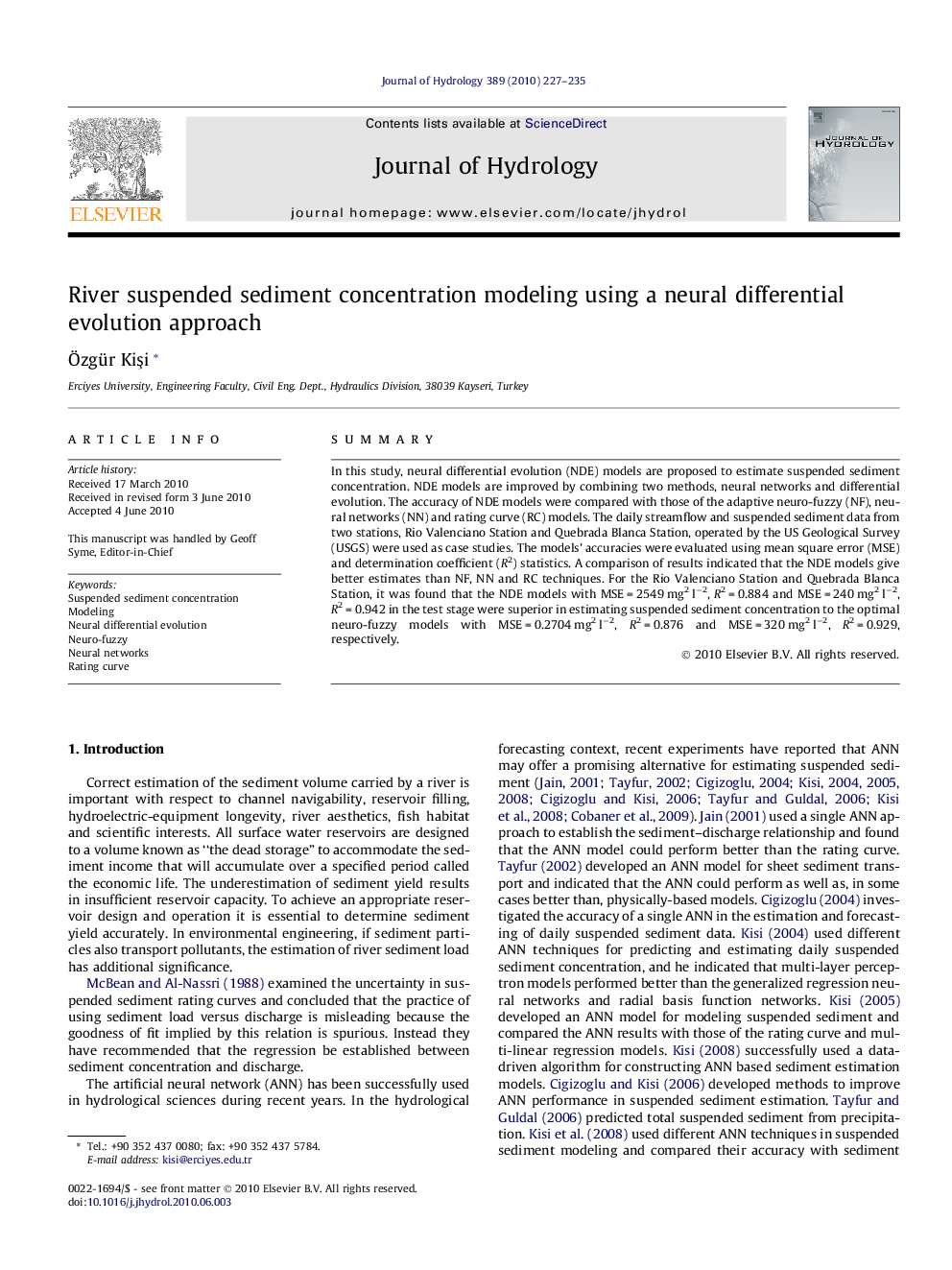| Article ID | Journal | Published Year | Pages | File Type |
|---|---|---|---|---|
| 4578206 | Journal of Hydrology | 2010 | 9 Pages |
SummaryIn this study, neural differential evolution (NDE) models are proposed to estimate suspended sediment concentration. NDE models are improved by combining two methods, neural networks and differential evolution. The accuracy of NDE models were compared with those of the adaptive neuro-fuzzy (NF), neural networks (NN) and rating curve (RC) models. The daily streamflow and suspended sediment data from two stations, Rio Valenciano Station and Quebrada Blanca Station, operated by the US Geological Survey (USGS) were used as case studies. The models’ accuracies were evaluated using mean square error (MSE) and determination coefficient (R2) statistics. A comparison of results indicated that the NDE models give better estimates than NF, NN and RC techniques. For the Rio Valenciano Station and Quebrada Blanca Station, it was found that the NDE models with MSE = 2549 mg2 l−2, R2 = 0.884 and MSE = 240 mg2 l−2, R2 = 0.942 in the test stage were superior in estimating suspended sediment concentration to the optimal neuro-fuzzy models with MSE = 0.2704 mg2 l−2, R2 = 0.876 and MSE = 320 mg2 l−2, R2 = 0.929, respectively.
